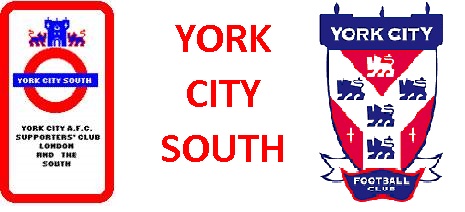

1974/5 Review
My first City promotion season was 1970/1, that side developed under Tom Johnston, was to earn us promotion to Division 2 (one flight below the top division) in 1974.
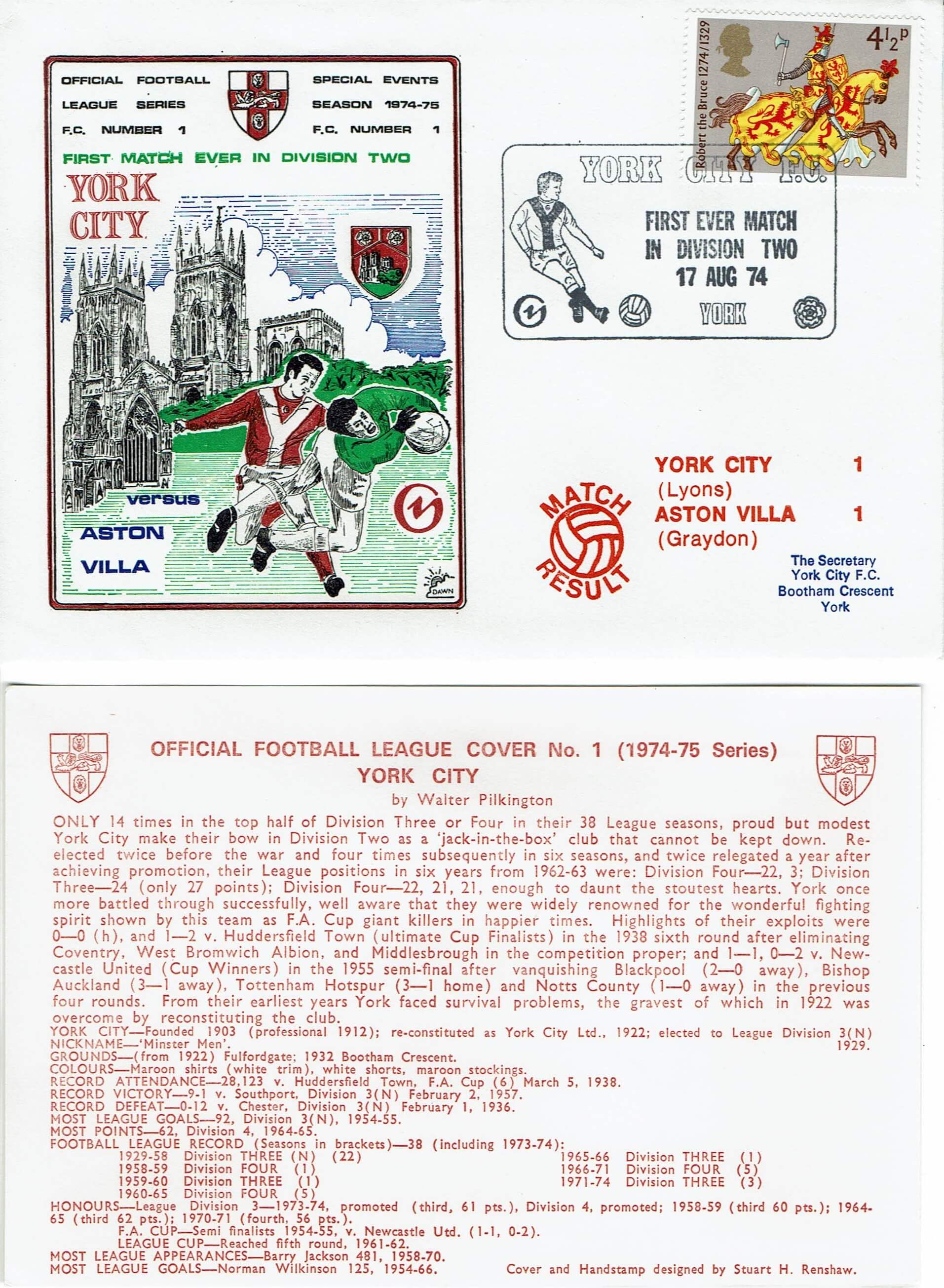
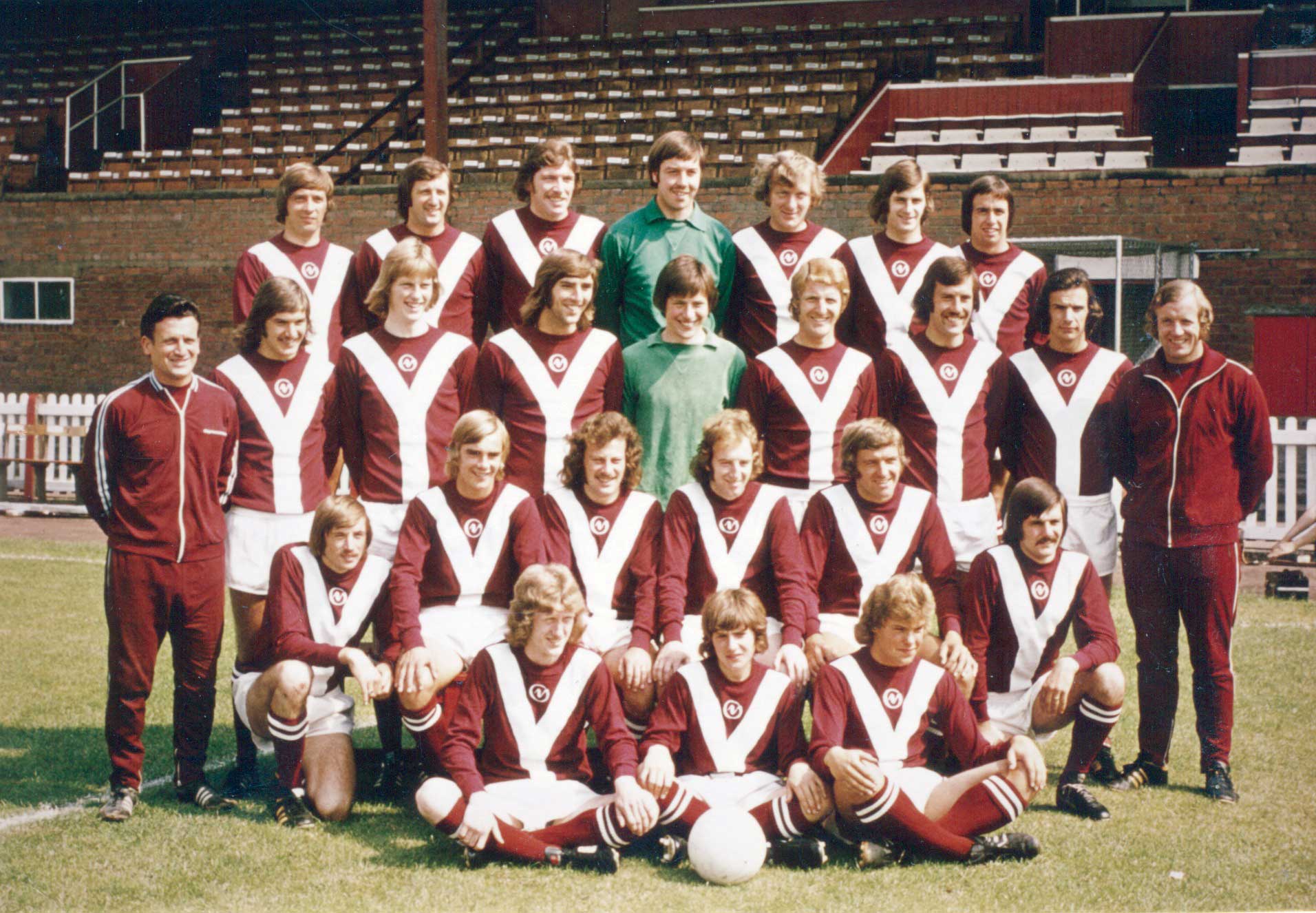
After years of encounters with the likes of Workington, Hartlepools and Rochdale, we had climbed out of the bottom 2 divisions. The team, resplendent in our unique new maroon Y-fronts (with logo designed by ex City junior Peter Turpin), one of the many innovations of Keith Hunt, our new Commercial Manager, could look forward to Manchester United, Aston Villa, Sunderland, Fulham and Norwich. United, newly relegated; Sunderland, just a year after their memorable FA Cup Final shock win over Leeds and Fulham, captained by Bobby Moore, England's 1966 World Cup winning captain were just some of the sides we were were facing for the first time in league football. So did Aston Villa, West Bromwich Albion, Nottingham Forest and Sheffield Wednesday. Add in the likes of Southampton, Portsmouth, Bolton and Blackpool, teams with recent top flight experience and City seemed to have a mountain to climb just to survive. City were to finish 15th in Division 2.
Our Division 3 success had been built on a rock solid defence, experience and skill in midfield and 2 strikers who'd come together to form an effective strike force. Together, an efficient, workmanlike side. Tom Johnston approached the challenge in his usual way. Proven, lower league performers including Mickey Cave and Jim Hinch who’d played well against us in the previous season and Peter Oliver, a free transfer left back from Hearts replacing Phil Burrows our departing left back and first ever player of the season.
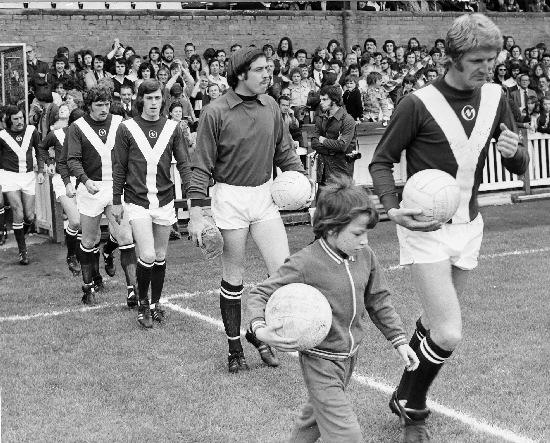
Could we survive against the big boys? Expectations were modest. City started the season with a 1-1 home draw against Aston Villa. Barry Lyons scoring our first goal of the new season. Fuelled by away wins at Fulham (2-0, Chris Jones scoring both) and Oldham (October 19th, 3-2), we surpassed ourselves as we hit 5th place. A month later, reality set in. City were thumped 3-0 by Sheffield Wednesday, our defence, previously so assured, was run ragged, the midfield showed its age and the attack was blunt (the dodgy keeper was to still yet to come as the defence was to become increasingly porous). An injury crisis saw us slump back from the fringes of the promotion race.
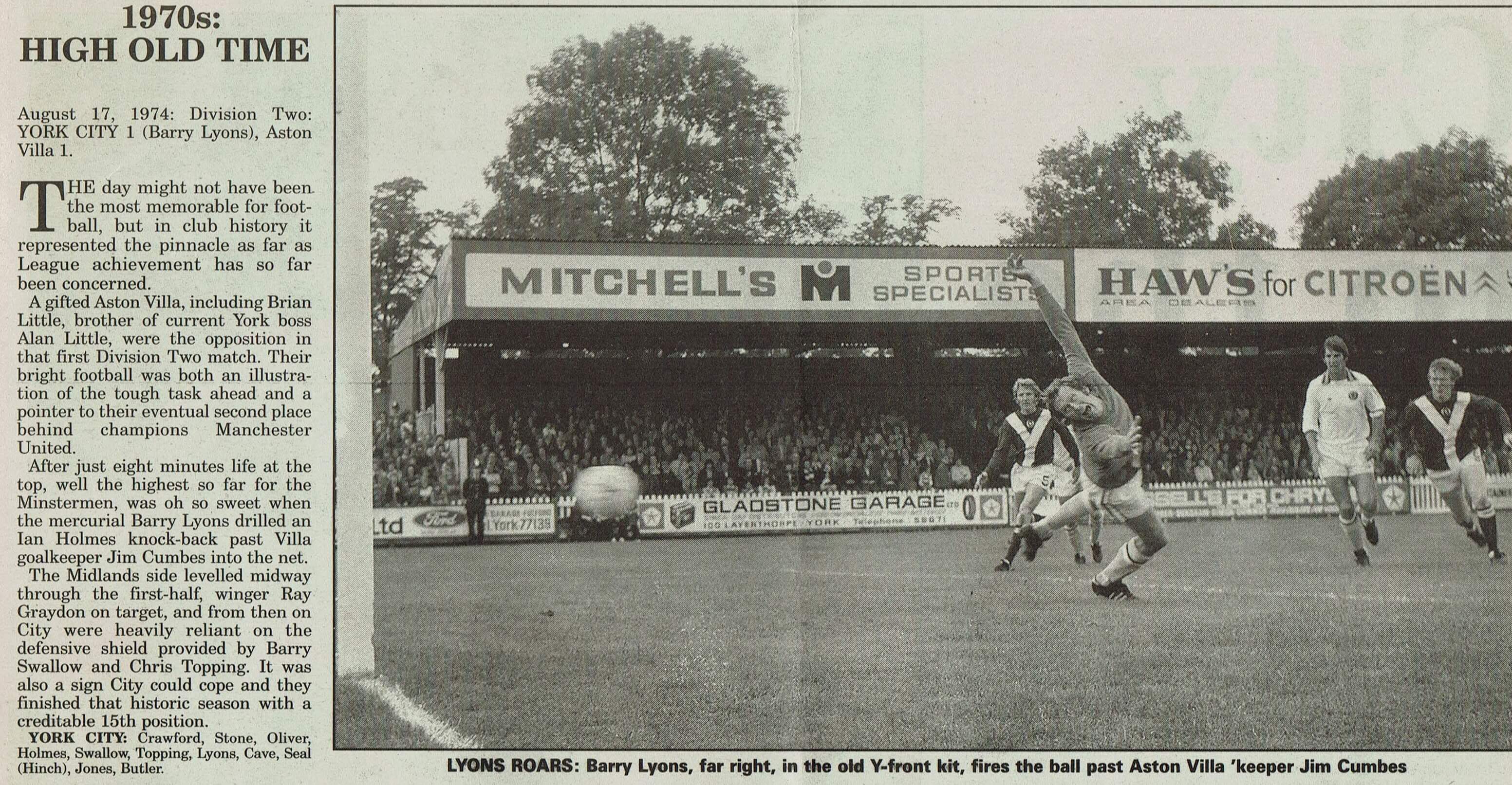
Watching from high up in the gods at Hillsbrough, on the top tier of a double decker stand (at the time, a regular FA Cup semi final venue), the players seemed like midgets. It wasn't as exciting as standing right behind the goal at Bootham Crescent.
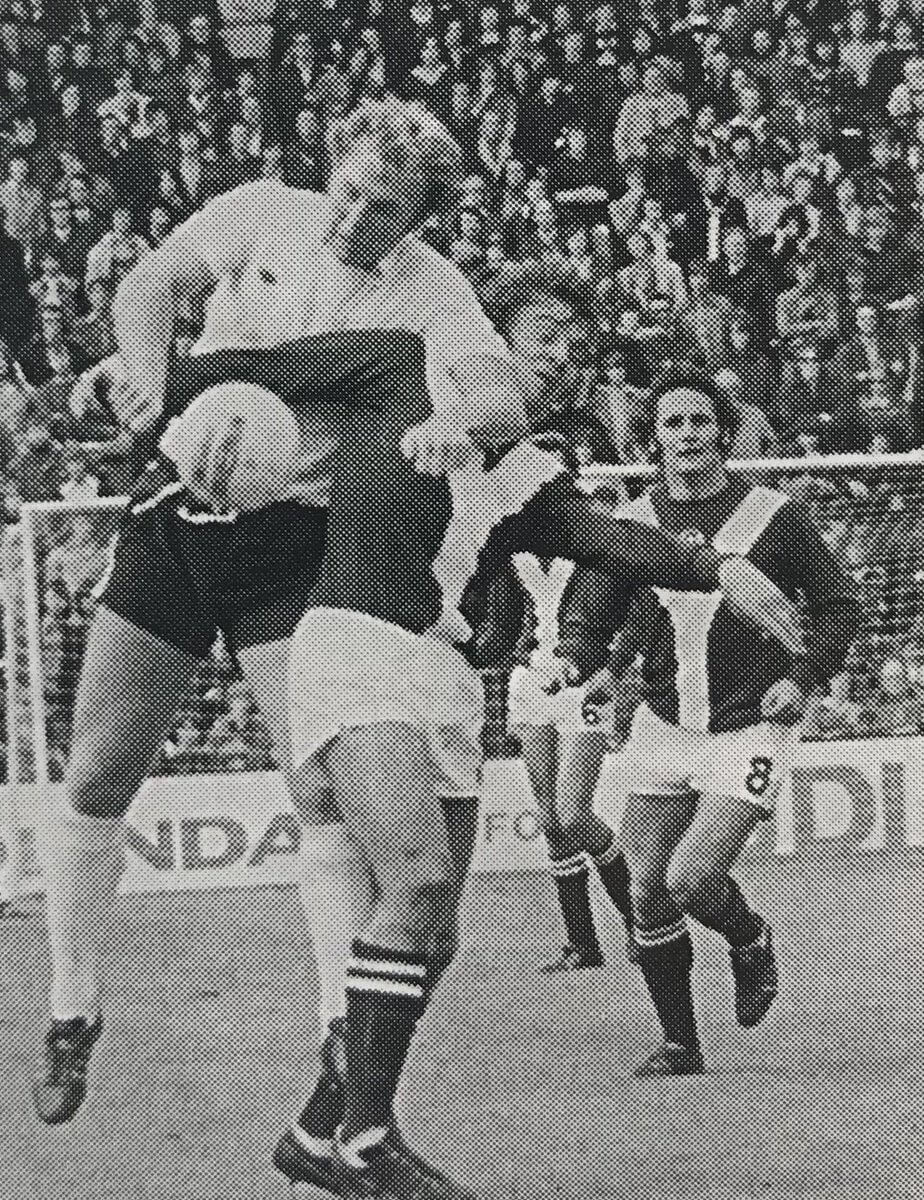
City muddled along and could sometimes raise our game on the day as demonstrated by an inspired 1-0 win over Norwich who were to gain promotion that season. A game remembered as Yorkshire TV could only show first half highlights as darkness descended and our floodlights were too weak to allow filming to continue after half time, even those were black and white only. Manchester United visited Bootham Crescent just before Christmas and won 1-0, probably the easiest and most one sided 1-0 I've ever seen. That game was scheduled for Match Of The Day, but the BBC pulled out after the Norwich game due to the quality of the floodlights.

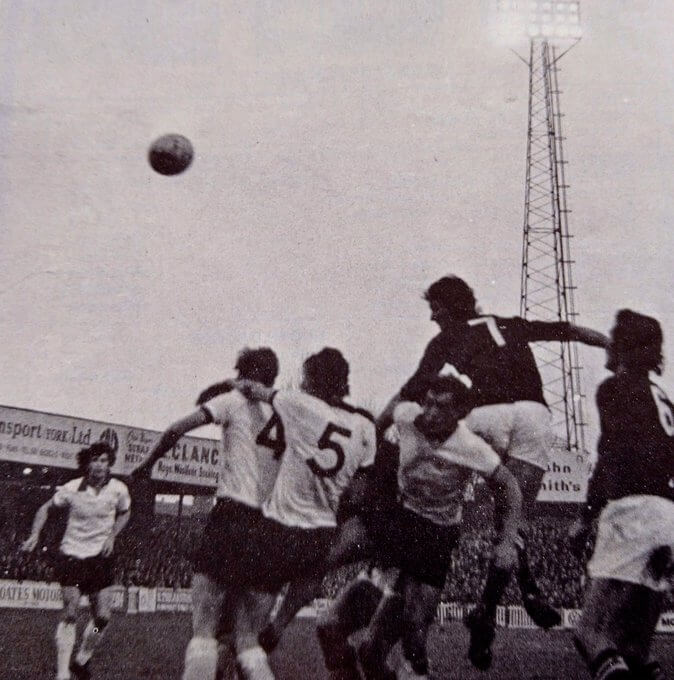
City drew 1-1 at Arsenal in the FA Cup after a glorious long range shot from Jimmy Seal gave us the lead (City fans £2 paid to sit or £1 to stand in The East Stand at Highbury, the 27,000 crowd saw gate receipts of £23,000, both clubs netted £7,000). City lost 3-1 in the replay after extra time. The games stand out for 3 reasons. The Jimmy Seal goal, a day after the Highbury game, news broke that Tom Johnston, our dour and canny Scottish manager was to resign in order to secure his financial future as Huddersfield's new General Manager. The replay defeat being memorable for a swift Arsenal counter attack that caught Graeme Crawford out of position. To this day, I swear he was getting fresh chewing gum out of his kit bag as Arsenal broke forward.
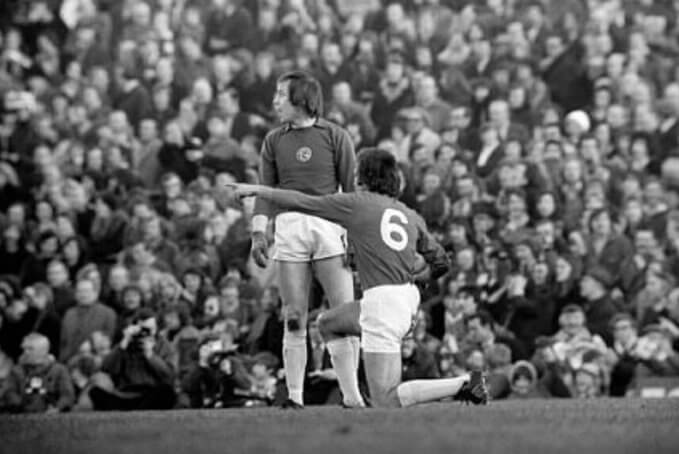
Another memorable win was against Fulham (thus completing the double) when a young Brian Pollard rang rings around the Bobby Moore / Alan Mullery defensive axis. 6 weeks later Fulham graced the FA Cup Final. Around this time, with football hooliganism rife, and home support often heavily outnumbered by our visitors, the club decided to move the home supporters to the opposite end of the ground (where we remained in diminishing numbers until the ground closed). I knew then that, we, the supporters, were just another commodity.
Wilf McGuinness, our new manager, whose previous managerial post in England had been as a short lived successor to Sir Matt Busby at Manchester United, saw us safely to the end of the season. Relegation was never a real possibility but our status wasn't confirmed until the penultimate game of the season. City finished 15th.
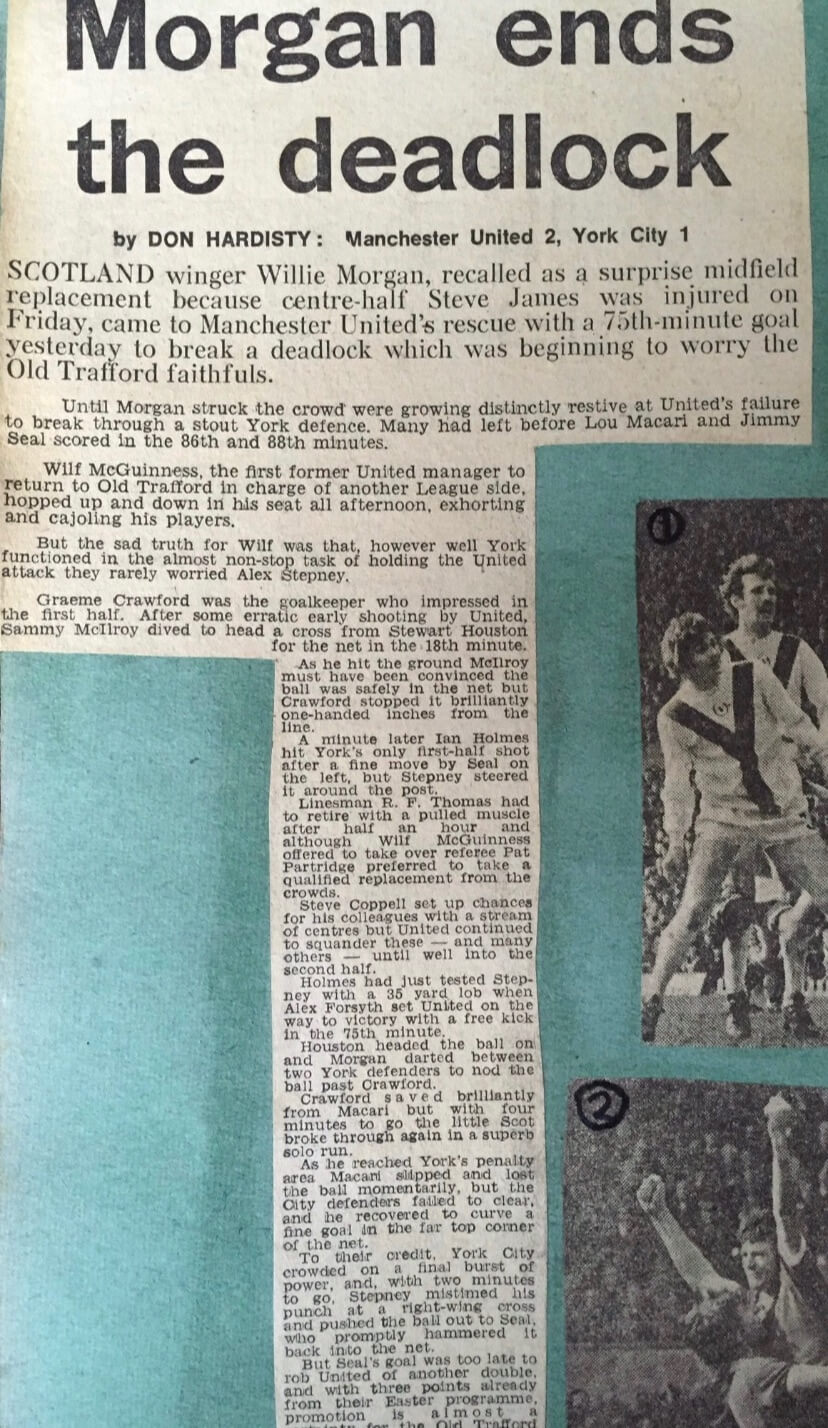
Chris Topping was voted Clubman Of The Year and together with captain Barry Swallow formed an effective central defensive partnership. Behind them, Graeme Crawford was once again an assured keeper. In midfield, Holmes and Pollard provided the flair whilst veterans Lyons and Butler together with record signing Mickey Cave provided the guile. Up front, the Seal / Jones partnership once again held its own. Our cultured football, with Lyons, Butler and Holmes prominent saw many plaudits heaped on “Little York”.
Of the regular line up, only Lyons and Butler had any real prior experience at this level and the footballing world was genuinely surprised that York adapted so well.
The era also marked the pinnacle of my playing days. I reached the dizzy heights of pulling on the school's 2nd XI shirt. Watching a successful side, my goalscoring prowess was based on that of Jimmy Seal and his partner, Chris Jones. Whilst from midfield, elements of the pace of Brian Pollard and the passing prowess of Barry Lyons added to my all round game.
Unfortunately, Barry Swallow, Lyons and Butler were at the veteran stage and many of the younger players were unable to sustain their performance into the following season. Indeed, only Pollard was to play at this level after leaving York.
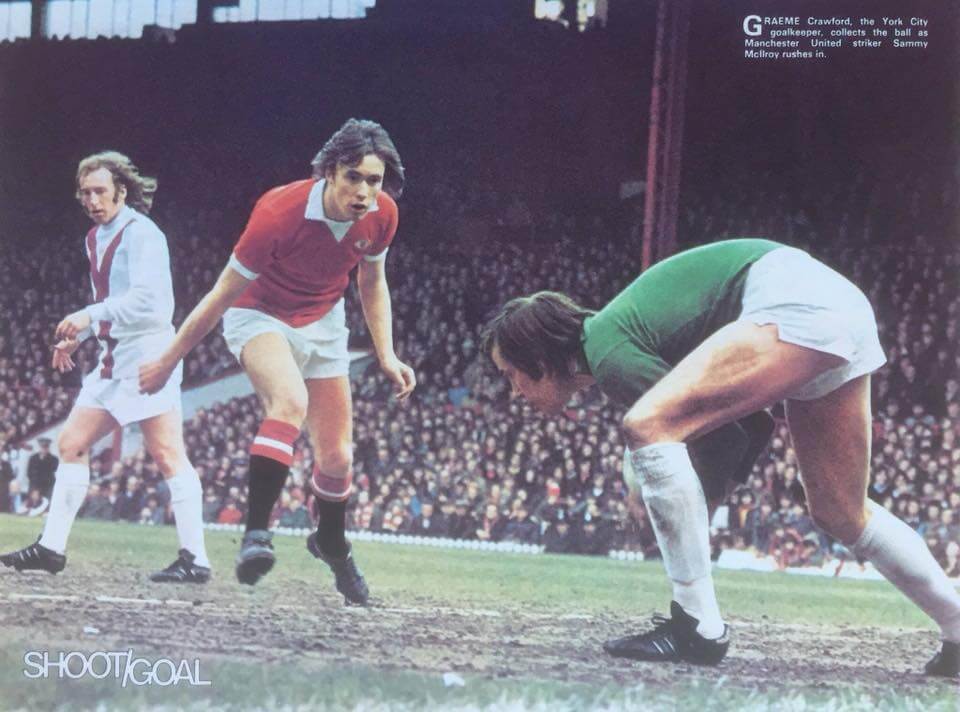
For York, good teams come together about every decade. As the promoted side, which had cost barely £40,000 to assemble, grew old together and broke up, City couldn't find (or afford) adequate replacements.
McGuinness' plan to bring ex Manchester United players to York failed to reap reward. The home grown spirit which had taken us so far was crushed as he sought to bring Old Trafford to Bootham Crescent. City suffered relegation in each of the following 2 seasons and flirted with bankruptcy whilst going cap in hand to The Football League as City once again had to apply for re-election in 1978. City remained in Division 4 until our 1983/4 record breaking Championship season when it all came together again.
Off the pitch, Keith Hunt resigned his post as Commercial Manager on October 15 citing a lack of ambition from the board. During his 5 months, he’d brought in an additional £1,500 in advertising revenue for City’s first ever game in Division 2, had instigated a club lottery which was raising £600 a week and raised £2,000 in programme advertising. All this at a time when ground admission was just £1. The fall out came when the board vetoed a £30,000 loan (2% over 10 years) Hunt had arranged to re-develop the Social Club, it would have doubled its floor space. There followed a rather unseemly public spat between the 2 parties.
Check out film coverage of several of these games.
Also see Season 73/4 Review
... and Finally
The following is a part of an article on Talkofthedevils, a Manchester United website in December 2020 marking the 45th anniversary of their Division 2 season.
United’s Saturday (home) game was against York City (29/March/1975), and with the rapid turnaround of games, Docherty’s programme notes had been written before the game against Bristol Rovers – but they carried a fairly prophetic warning. “We seem to have made a habit of giving away gift goals against Norwich this season, I don’t say it is bad luck either, more like bad professionalism,” he lamented. “Frequently I have been more worried about our mistakes than anything the opposition might do. I know we have a good defence – the goals against figures prove that – but if we could wipe out the unforced slips it would be even better.” Still, Docherty was in positive mood in what he described ‘could be the crucial weekend for Manchester United’. “I must say that I am very happy about our recovery of form,” he expressed. “A few weeks ago our results were far from championship figures. Three points from five games was poor, but note the improvement from the next five games with a return of seven points. That was certainly championship form and a neat little run after a bad spell that put us back on the right track.”
York City – themselves battling relegation – had also changed managers during the season, with a familiar name, Wilf McGuinness, taking charge. It was McGuinness of course who had taken what to some might have seemed like the poisoned chalice, being the first man to attempt to succeed Sir Matt Busby at Manchester United. Luck had not been his friend and ultimately he was dismissed; after four years in Greece, coaching Aris Thessaloniki and Panachaiki, in February 1975 he had been given the York job. It was his first return to Old Trafford.
Saturday 29th March – Division Two – Old Trafford (46,802)
“Wilf was more nervous than the players,” claimed visiting defender Barry Swallow, despite this being the largest League crowd York had ever played in front of. The only notable action of the first half was an injury to the linesman in the 28th minute – play was stopped while the search for a replacement went on, and eventually, it took an announcement from the public address system to source somebody from the crowd to do it!
The confidence of recent form wasn’t helping United’s cause (though it may have only been natural that their resources were drained) and it took until the 75th minute for the breakthrough to finally come. Forsyth’s free kick was flicked on by Houston, and Morgan (in the number four shirt, not his usual number seven) was on hand to finish from close in. Ten minutes later, Macari found space in the penalty area after a pass from Morgan (who originally appeared to control the ball with his hand), but was brought down. He gesticulated for a penalty but referee Pat Partridge didn’t award it – still in control of the ball, Macari promptly jumped up and smashed it into the goal.
The points were safe but Docherty was left to curse another late lack of concentration when York went straight down the field and scored through Jimmy Seal. Of the two managers, though, McGuinness was the one angrier at full time. “Two bad decisions cost us the game. I didn’t think it should have been a free kick that led to the first goal and Morgan clearly handled before the second was scored,” he argued.
McGuinness’ recalled the return in his 2008 autobiography. “It felt overwhelmingly peculiar to be operating from the away dugout, but there was absolutely no question of divided loyalties,” he said. “I was very proud of how my team played. I think we deserved a point and the goal by Lou Macari which turned out to be the difference between the sides was an outrage. The little fella caught the ball in both hands, ran with it for ten yards and then drop-kicked it into our net – at least, that’s how I remember it!”
Jokes aside, McGuinness was left touched by the welcome he received by both the club and the United manager. “I was profoundly moved, too, by the warmth of the reception I received at Old Trafford. The fans were fantastic, greeting me with genuine affection and appreciation, together with a dash of sympathy over the way I’d had to leave… Then there was Tommy Docherty, the current boss, who could not have made me more welcome. The Doc can be a contradictory customer because he says some outrageous things at times, but he can also be one of the most supportive men in football. When I had broken my leg all those years earlier, one of the first letters I received was from Tommy, outlining how he had made a complete recovery after breaking his own leg and predicting that I would do the same. It was a lovely touch because he was an established star at the time and I hardly knew him. You never forget generosity of spirit like that.”
Showing the kind of spirit they had at Old Trafford, McGuinness’ York City stayed up. In his future career as an after-dinner speaker, one of his many soundbites was that he had ‘managed York City in the Fourth, Third and Second Divisions – just in the wrong order!’ after two consecutive relegations in 1976 and 1977.
Manchester United’s game with York City may not seem relatively remarkable but it was the game which saw the birth of what would become the formation Docherty’s team would most commonly become to be associated with – 4-2-4. The 4-4-2 which had been the shape for most of the season was slowly being advanced, possibly through the attacking capabilities of his side and the way that they had naturally fallen together. As was stated earlier, Brian Greenhoff’s permanent move into the back four was made the following season, but that is where he played against York City. Morgan and Coppell were both wide men but Docherty’s interpretation of the capabilities of each player were perhaps best illustrated in his subtle, yet profound description of the two – Morgan being an outside right, and Coppell being a winger. The irony, of course, is that of the two, Coppell was undoubtedly the grafter in comparison, with Morgan probably a more natural ‘winger’ with his penchant for the incredible. Daly and Macari as midfielders could not exactly be said to be defensive minded, but equally, were not work shy. McIlroy was up front with Pearson. Eventually, McIlroy would move further back in place of Daly, and Jimmy Greenhoff and Gordon Hill would come in to complete the shape of the side.
Manchester United 2 (Morgan, Macari) York City 1 Seal)
Manchester United: Stepney, Forsyth, Houston, Morgan, Greenhoff, Buchan, Coppell, McIlroy, Pearson, Macari, Daly
York City: Crawford, Calvert, Burrows, Holmes, Swallow, Topping, Pollard Cave, Seal, Jones (Lyons), Butler